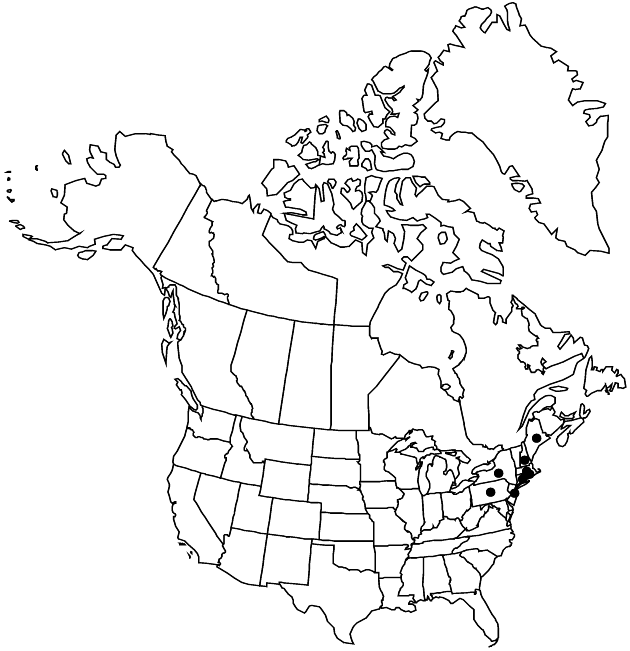Liatris scariosa var. novaeangliae
Taxon 52: 316. 2003.
Basionym: Lacinaria scariosa var. novae-angliae Lunell Amer. Midl. Naturalist 2: 177. 1912 (as Laciniaria)
Synonyms: Liatris novae-angliae (Lunell) Shinners
Revision as of 22:55, 29 July 2020 by imported>Volume Importer
Plants 30–100 cm. Stems with 20–85 leaves or leafy bracts proximal to heads. Leaves: basal and proximal cauline lanceolate to lanceolate or oblanceolate-spatulate, mostly 110–270 × 5–25 mm, glabrous or hirtello-puberulent, weakly, if at all, glanddotted. Heads usually 5–30. Florets 35–60.
Phenology: Flowering (Jul–)Aug–Sep.
Habitat: Sandy fields, woods, railroads, road banks
Elevation: 20–100 m
Distribution

Conn., Maine, Mass., N.H., N.J., N.Y., Pa., R.I.
Discussion
Selected References
None.
Lower Taxa
None.
"barbellate" is not a number."fine" is not a number.
... more about "Liatris scariosa var. novaeangliae"
introrse +
connate +
rounded +
scarious +
absent +
hirsute +
papillate +
racemiform +
continuous +
glabrous +
decurrent +
mostly linear;ovatelanceolate +
(4-)5-angled;10-ribbed +
hyaline +
narrow +
leafy +
proximal +
20;85 +
linear-clavate +
stigmatic +
barbellate +
12;40 +
coarse +
absent +
not 2-lipped +
equaling +
monomorphic +
8-11-ribbed +
prismatic +
4.5mm;6mm +
straight +
distinct +
proximal +
35;60 +
bisexual +
dispersed +
singly +
discoid +
indeterminate +
5;30 +
homogamous +
surrounding +
campanulate;turbinate-campanulate +
leafy +
alternate +
lanceolate;lanceolate or oblanceolate-spatulate +
2-carpellate +
inferior +
attached +
anatropous +
persistent +
tough +
thick +
connate +
nerved +
persistent +
distinct +
falling +
unequal +
equal +
Taxon +
2003 +
absent +
epaleate +
conic;spheric;usually flat;convex +
fibrous +
exalbuminous +
modifed +
4;5 +
Endemic +
alternate +
erect +
puberulent +
2-branched +
hirsutulous +
papillate +
Liatris scariosa var. novaeangliae +
Liatris scariosa +
variety +
perennial +